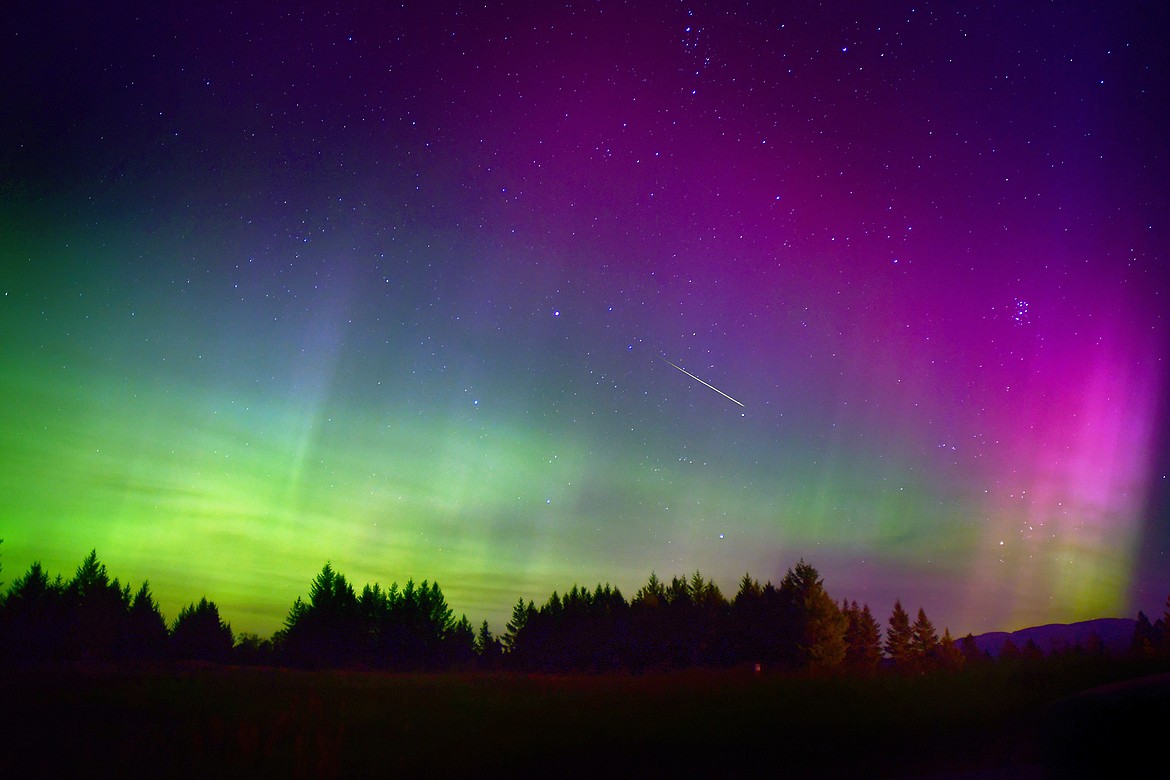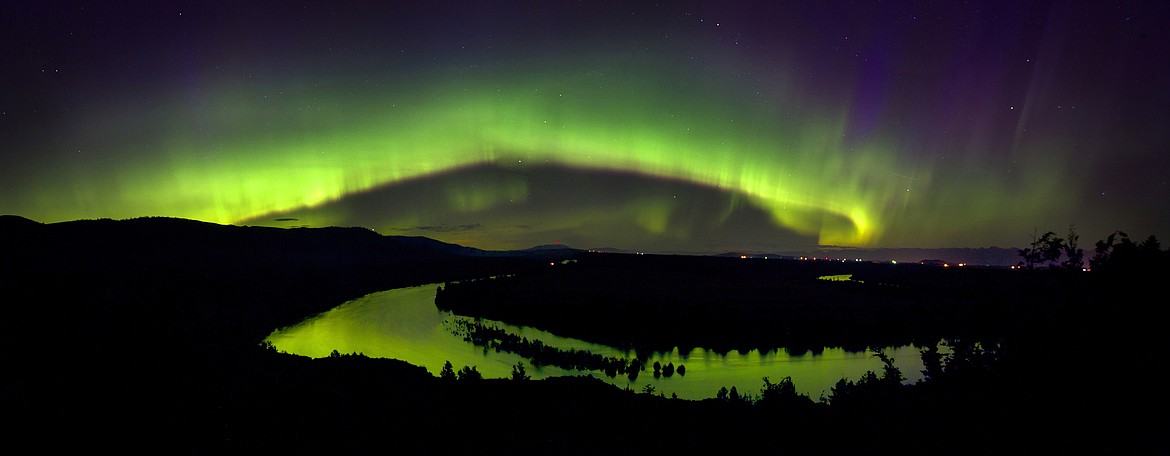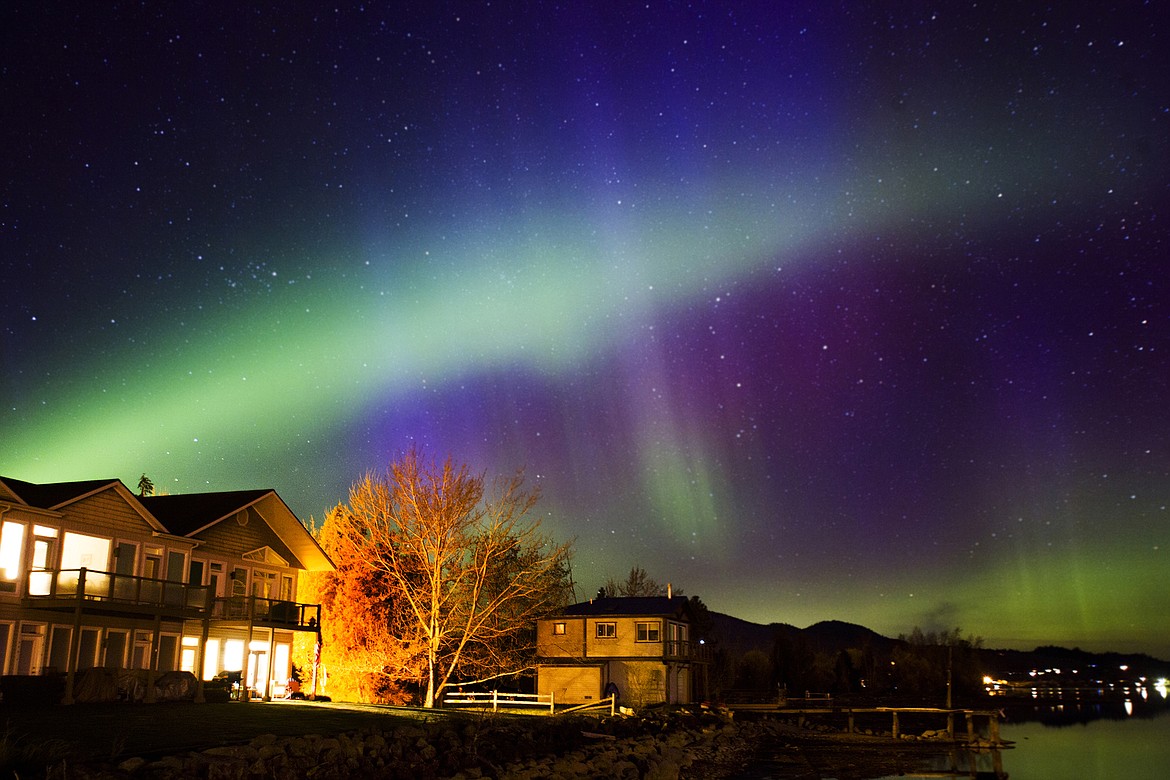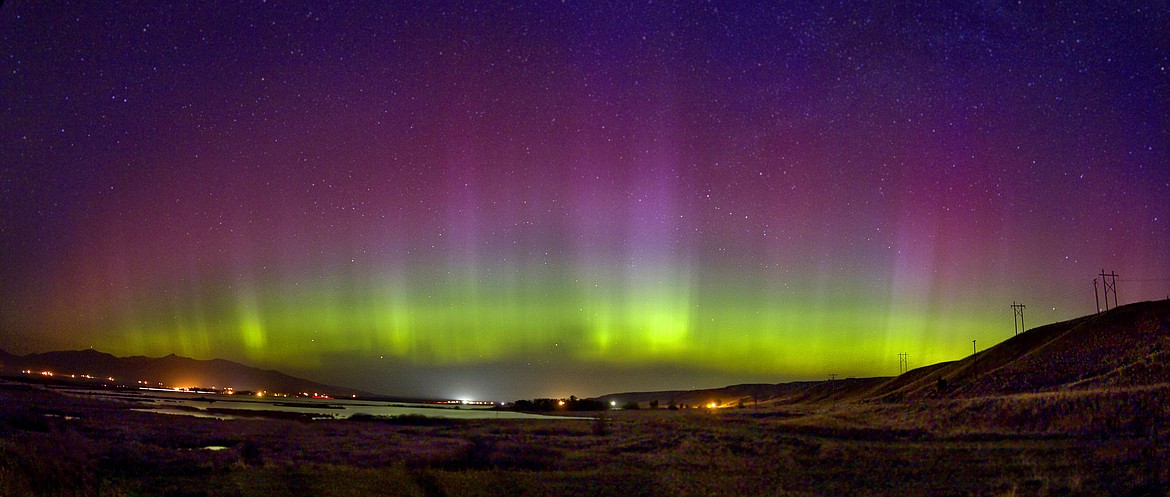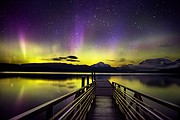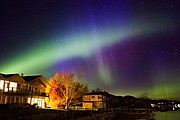Light shows: Aurora borealis activity on the rise due to solar activity buildup
JEREMY WEBER | Hagadone News Network | UPDATED 4 years, 11 months AGO
It is one of nature’s most amazing spectacles. A light show robust with color and motion. Several nights each year, the aurora borealis presents its delicate dance of ribbons, arcs and rays in the skies north of Kalispell and its frequency is on the rise.
With the sun coming out of a period of extremely low sunspot activity, the number of visible auroras in the region should be on the rise for the next several years, according to Rodney Viereck, a researcher at the NOAA/NWS Space Weather Prediction Center in Boulder, Colorado. While the number of auroras should continue to increase as solar activity continues to strengthen during the buildup to solar maximum in 2025, Viereck says the most intense light shows usually come as the sun drops back toward solar minimum.
“Over the next three or four years, we will see an increase in geomagnetic activity, but most spectacular aurora activity seems to be seen on the declining side of the solar cycle,” Viereck said.
For local photographers, this means that after a pause for many months, the best show the night sky has to offer is back in town.
IT WAS during the 19th century that scientists noticed a periodic variation in the number of sunspots from year to year, leading to the discovery that the frequency of these events occur in cycles. Recent research has determined the sun has an average solar cycle of 10.66 years, though cycles as short as eight years and as long as 14 years have been observed. It is this cycle that helps determine the frequency and intensity of auroras on Earth.
Sunspots are the most visible indicator of solar activity and solar maximum and minimum are terms that refer to the periods of the most and the fewest sunspots visible on the surface of the sun during a solar cycle.
Sunspot frequencies and the solar cycle determine the quantity of aurora seen on Earth. Since recording began in 1755, there have been 24 completed solar cycles. The sun is currently in solar cycle 25, which began in December 2019.
While scientists continue to improve their ability to predict space weather, they still are not sure what to expect from Solar Cycle 25.
“As you can imagine, predicting solar cycles is both very important and very challenging. The prediction panel does its best to predict what will happen during each cycle, but some of the predictions are based on physics and others are more like throwing darts at a dartboard,” Viereck said. “The consensus about Solar Cycle 25 is that it will be much like Solar Cycle 24 — small, but we have been wrong before. We did not do a very good job of predicting Solar Cycle 24. There were some scientists who came out with some fairly big estimates for activity, but they were wrong. We are still struggling to truly understand what is going on inside the Sun.”
According to Viereck, aurora activity on Earth begins 91 million miles away with events on the sun. He says that aurora activity has two causes: charged particles launched toward Earth during a coronal mass ejection (CME) or unusually strong solar winds.
When the super-charged particles from either source reach the Earth’s magnetosphere (CME particles can reach Earth in less than a day, but take 1-2 days on average), that is when the show begins.
“The particles that get accelerated out on the edges of the magnetic field get brought toward the poles. The electrons get funneled down to the poles, and when they hit the atmosphere, they create aurora,” Viereck said. “The bigger the storm, the brighter the aurora, which can then be seen further from the poles. The stronger storms deform the magnetic field around the poles and that’s why it can be seen further from the poles. If you have a particularly bright aurora display, it can be seen 600-700 miles away.”
The magnetic activity around the Earth is measured by the Kp Index, which takes current electromagnetic observations from points around the Earth and compares them with that point’s known historic averages. The index ranges from Kp 0 (very little activity) to Kp 9 and stronger (extreme geomagnetic storm). On average, the Earth sees 900 days where the Kp reaches 5 (minor storm) during each solar cycle and four days when it reaches Kp 9.
THE DIFFERENT colors visible with the aurora are caused by variations in the chemistry of the atmosphere at different altitudes. The color that is visible when the aurora occurs depends on which gas the charged particles are interacting with.
At high altitude, above 200 km, the high oxygen content creates a red hue. At altitudes between 100 and 200 km, the combination of oxygen and nitrogen creates a green aurora, which is the most common. Auroras that occur below 100 km will be primarily blue due to the high concentration of nitrogen. It is the same concept used to create neon signs.
The brightness of the aurora depends on the amount of energy being carried by the charged particles colliding with the atmosphere. The more energy, the brighter the aurora and the higher the Kp index reading.
“The bigger storms tend to have a broader spectrum of particle energy, so you will get a lot of the reds. The stronger storms, that are visible further south, would have a lot of the tall, red rays at the top,” Viereck said. “When you are farther south, sometimes you can see the aurora when you look to the northern horizon and those tall, red auroral rays are what you will see.”
Viereck said the most powerful storm in recent history occurred at the end of October of 2003. Known as the Halloween 2003 storm, the Kp index moved above 9 several times over a three-day period and the aurora borealis was seen as far south as Texas and Florida while the aurora Australis was seen as far north as New Zealand. The magnetic disturbance and radiation associated with the storm knocked out satellites, disrupted power grids and prompted astronauts to seek cover in the more shielded sections of the International Space Station.
The most powerful storm on record occurred in early September 1859, when a large solar flare caused the aurora to be seen as far south as Mexico and the Caribbean in the northern hemisphere and as far north as Papua New Guinea in the southern hemisphere.
Known as the Carrington Event, it is theorized that it might have been possible for someone standing at high elevation near the equator to have seen both the aurora borealis and the aurora Australis simultaneously. The storm disrupted telegraph communications for days and even allowed some operators to continue sending messages after their equipment had been disconnected from power supplies.
According to Viereck, it takes a level G1 (Kp5) geomagnetic storm or stronger for the aurora to put on a good show over the skies of northern Montana. For those wanting to catch a glimpse of the lights, he recommends checking the Kp levels on the internet each evening and keeping in mind that most intense storms usually occur in the hours just before and after midnight. He says it is essential to find dark skies free of light pollution with a clear view looking north.
Viereck says that Solar Cycle 25 has already produced a few lower level storms and he expects to see much higher levels throughout the rest of the cycle.
Reporter Jeremy Weber may be reached at 758-4446 or [email protected].
ARTICLES BY JEREMY WEBER

Valkyries three wins from back-to-back state titles
Two years ago, the Bigfork Valkyries came into the season having never won a basketball state championship. Now, they enter the Class A state tournament in Butte this weekend as the favorites to win back-to-back state titles.

Valkyries win third consecutive divisional title
The classification for the Valkyries may be different this season but the result is the same.

Vikings fight to the finish at divisional tourney
The Vikings basketball season came to a close over the weekend as Bigfork fell to Butte Central and Frenchtown at the Western A Divisional tournament in Butte.

